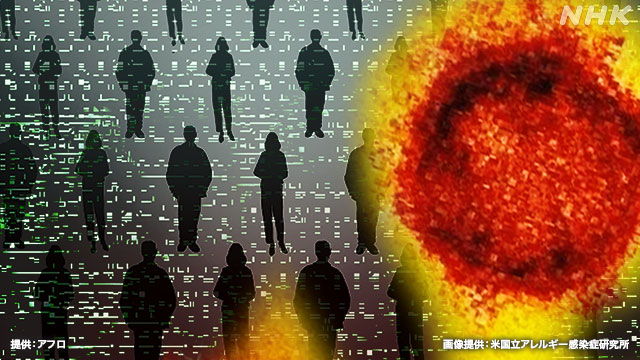The government's "New Coronavirus Infectious Disease Control Subcommittee" has put together a new idea that measures should be taken with a greater emphasis on the degree of medical strain.
The subcommittee states that the level of medical care will be determined by each prefecture, as the degree of tightness in medical care will differ from prefecture to prefecture.
In response to this, the Cabinet Secretariat decided to show two indicators for determining the level of prefectures: "load on medical care provision system" and "infection status".
Of these, the "load on the medical care provision system, etc." includes "use rate of secured beds", "usage rate of severely secured beds", "hospitalization rate" and its "compared to last week", and "number of severely ill patients" compared to last week. There are five items of "Transition".
In addition, the "infection status" includes "positive rate of PCR test", "number of newly infected persons" per 100,000 people, "number of newly infected persons", "compared to last week" and "compared to last week", and "infection". There are five items, "Percentage of people whose route is unknown".
As of the 21st of this month, the Cabinet Secretariat released data for six prefectures: Hokkaido, Tokyo, Aichi, Osaka, Fukuoka, and Okinawa.
"Load on medical care provision system, etc."
The first is the "load on the medical care provision system, etc."
"Usage rate of secured beds" is
▽ 3% in Hokkaido
▽
1% in Tokyo
▽
1% in
Aichi
▽
3% in Osaka ▽
1% in
Fukuoka
▽ 0% in Okinawa.
"Usage rate of severely ill beds" is
▽ 1% in Hokkaido
▽
3% in Tokyo ▽
1% in
Aichi
▽
2% in Osaka
▽
2% in
Fukuoka
▽
2% in
Okinawa.
The "hospitalization rate" and its "compared to last week" are not applicable to all six prefectures announced by the Cabinet Secretariat.
See the end of the sentence for "not applicable".
This is the "change in the number of severely ill people" compared to last week.
If the value continues to exceed 1, it indicates an increasing trend.
▽ 2.00 times in Hokkaido
▽
0.83 times in Tokyo
▽
0.56 times in Aichi prefecture
▽
0.70 times in Osaka prefecture
▽
0.90 times in Fukuoka prefecture
▽ 0.38 times in Okinawa prefecture.
Infection status
Next is the "infection status".
Positive rate for PCR tests in the last week.
▽ 1.0% in Hokkaido
▽ 0.3% in Tokyo
▽
0.3% in
Aichi
▽
0.2% in Osaka
▽
0.4% in Fukuoka
▽ 0.1% in Okinawa.
The number of new infections per 100,000 population in the last week.
▽ 3 people in Hokkaido
▽ 1 person in Tokyo
▽
1 person in
Aichi prefecture ▽ 1 person in
Osaka prefecture
▽
1 person in
Fukuoka prefecture
▽ 0 people in Okinawa prefecture.
Next is the number of newly infected people compared to last week.
If the value continues to exceed 1, it indicates an increasing trend.
▽ 1.79 times in Hokkaido
▽ 0.70 times in Tokyo
▽
0.69 times in Aichi prefecture
▽
0.62 times in Osaka prefecture
▽
1.62 times in Fukuoka prefecture
▽ 0.32 times in Okinawa prefecture.
Compared to the week before last, it was
2.17 times in Hokkaido
▽
0.86 times in Tokyo
▽
0.54 times in Aichi prefecture
▽
0.57 times in Osaka prefecture
▽
1.58 times in Fukuoka prefecture
▽ 0.13 times in Okinawa prefecture.
Finally, the percentage of people whose infection route is unknown.
▽ 26% in Hokkaido
▽
66% in Tokyo
▽
69% in Aichi Prefecture
▽ 57% in Osaka Prefecture
▽ 49% in Fukuoka prefecture ▽
50% in Okinawa prefecture.
Not applicable
The government's "New Coronavirus Infectious Disease Control Subcommittee" states that the "hospitalization rate" index does not apply in the following cases.
When the number of medical treatment is less than 10 per 100,000 population.
Of the number of new positives, those who need to be hospitalized can be hospitalized by the day after the outbreak notification.

